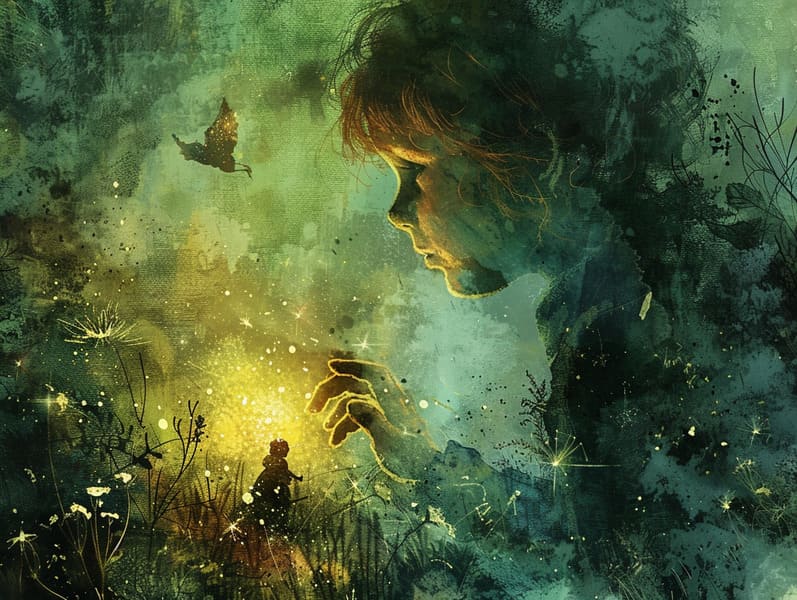The Evolution of Timeless Fairy Tales and the Unceasing Beauty.
The Evolution of Timeless Fairy Tales and the Unceasing Beauty.
Blog Article

Fairy tales have historical significance. These stories have been relayed from one generation to the next long before they were ever published. They emerged from a variety of cultures, including Indigenous traditions. They were initially transmitted among mature audiences, often carrying themes and messages related to the societal norms and beliefs of the time.
The renowned Brothers Grimm, the two Grimm brothers, were among the first to compile many of these beloved stories. Their anthology, "Grimm's Fables," included classics like "The True Bride," "The Story of Hansel and Gretel," and "Little Snow White," which have since become pillars in the world of traditional fairy tales. Similarly, H. C. Andersen's enchanting stories, such as "The Little Mermaid," and "The Duckling's Story," have gained the love worldwide, cementing their place in the pantheon of treasured fairy tales.
Despite their ancient origins, fairy tales remain as relevant as ever, especially as children's bedtime stories. These whimsical stories are now available in numerous formats, including richly illustrated books, captivating animations, and digital fairy tales.
Their lasting appeal can be connected to several enchanting factors:
Important Morals: Old fairy tales often impart important moral lessons. Fairy tales like "The Story of the Boy Who Cried Wolf" teach the importance of honesty, while "The Tale of the Tortoise and the Hare" emphasize the traits of determination and unassuming nature. These narratives offer young ones clear distinctions between virtue and vice, building their moral compass in a gentle yet meaningful way.
Kindness and Comprehension: Ancient fairy tales frequently include personalities facing struggles and tests, prompting kids to identify with their struggles and champion their triumphs. For instance, "Beauty and Her Beast" illustrates the merit of seeing beyond looks to perceive the true being of a character, building awareness and understanding.
Cultural Recognition: Many fairy tales are deeply ingrained in the cultural contexts from which they bloomed. Immersing in these stories can provide enlightening views into different heritages, fostering a sense of cultural understanding and comprehension.
Imagination and Creativity: The extraordinary elements in fairy tales—enchanted lands—motivate children’s fantastical thinking. These narratives move readers to fantasy realms, boosting inventive ideas and a sense of marvel that endures a lifetime.
Timeless fairy tales are not only charming but also didactic. They serve as mesmerizing tools in developing various cognitive and emotional skills in young readers. When timeless fairy tales are read aloud, they advance language acquisition by bringing new terms and meanings and complex sentence structures. This practice also strengthens hearing abilities and attention, as young ones remain attentive, enthusiastic to see what happens next.
Furthermore, examining the themes and characters of ancient fairy tales can enhance critical thinking and thought processes. Kids are guided to notice patterns, forecast, and get cause and effect. These examinations also encourage the young communicate their thoughts and feelings, adding to their emotional intelligence.
In today’s cyber age, the availability of web-based fairy tales has made these fairy tales more obtainable than ever. Web-based platforms and software present wide arrays of popular fairy tales that can be experienced or listened on anytime, anywhere. Fairy tales read aloud are particularly sought after, offering an delightful method for young ones to savor these enchanting tales. Spoken stories and read-to-me stories transport characters and settings to life, often paired with fantastical background sounds and music that amplify the story journey.
The lasting allure of timeless fairy tales lies in their ability to shift to today's world while holding onto their core messages. Contemporary versions of these stories often spotlight more multicultural characters and modern settings, making them understandable to today’s audience. However, the fundamental themes of valour, empathy, and fair play remain unchanged, continuing to reach young listeners of all ages.
Classic fairy tales also offer a sense of this site warmth and homeliness. They deliver a structured narrative with a recognizable beginning, middle, and end, often ending with the ending of conflicts and the triumph of virtue over vice. This uniformity can be consoling for little ones, allowing a sense of steadfastness in an unstable world.
Traditional fairy tales continue to spellbind and edify new generations, maintaining their wonder and relevance in modern society. As bedtime stories for kids, they confer upon a perfect blend of charm and enlightenment, cultivating moral values, empathy, and creativity. The existence of online storybooks and the commonness of fairy tales spoken warrant that these ancient fairy tales remain reachable to new generations.
By keeping and imparting these narratives, we continue to honor the rich tapestry of fables and cultural heritage. Whether you are experiencing a artistically illustrated book, enjoying a online library, or listening via an voice book, the elegance of traditional fairy tales is always within reach. These fairy tales highlight of the steadfast magic of narratives and its ability to unite us across generations and cultures.
Whether you are perusing a colorful picture book, delving into a virtual library, or listening on an voice book, the magic of Grimm's fairy tales is always within reach.
These narratives show us of the unending nature of tales and its ability to gather us across eras and regions, forming a connection that delights and instructs alike.